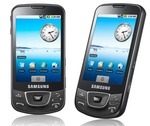Xiaomi Redmi 9 Review - Android
If the Redmi Note 9 series is still above your budget, then fret not as we have the successor to last year’s successful Redmi...
The post Xiaomi Redmi 9 Review appeared first on YugaTech | Philippines Tech News & Reviews.
If the Redmi Note 9 series is still above your budget, then fret not as we have the successor to last year’s successful Redmi 8 — the inexpensive Redmi 9. It’s got a lot going for it despite the low price tag, including a capable MediaTek Helio G80 chipset, a total of five cameras, and a large battery.

On paper, it’s definitely eye-catching. But is it worth every peso? Let’s find out.
Design and Construction
Starting with design, it’s definitely hefty in the hand. It feels quite solid and not so fragile probably thanks to the plastic build, although that doesn’t mean it looks bad at all.

The back panel, apart from being plastic, has a pretty cool design that features ripples starting from the rear camera area. We have quad cameras here, split into two different modules, which is an interesting implementation.

Up front, we have the 6.53-inch screen that admittedly has thick bezels by today’s standards. It utilizes a waterdrop notch to house the front camera and speakerphone.

The left side contains the triple card tray with dedicated slots for two nano SIM cards and a microSD card. The right side has the volume rocker and power button. They’re nice and clicky and the placement is just right for your thumb or finger to easily reach.

The bottom is pretty much complete, featuring a headphone jack, USB Type-C port, the main microphone, and loudspeaker. Up top, we have the secondary noise-canceling microphone as well as an IR blaster, a feature Redmi fans continue to enjoy.

We’d describe the design as simple, yet functional. It has both a headphone jack and Type-C port, it has an IR blaster, it has a dedicated SD slot. That’s quite a collection of features that a lot of users look for.
Display and Multimedia
For display, the Redmi 9 utilizes a 6.53-inch FHD+ IPS panel with a resolution of 2340 x 1080, which equates to a pixel density of 395ppi. It comes with Corning Gorilla Glass 3 protection as well.

Display quality is above average for an entry-level phone, as a 720p displays are typically expected at this price point. As such, details are crisp, colors are vibrant thanks to the quality of the panel, and it gets pretty bright as well — it’s advertised to have 400 nits of typical brightness, which does seem to be the case.
As for audio quality, don’t expect much. The single downward-firing speaker can get loud for a small space, but is definitely lacking in bass. Mids and highs are clear, but detail is lost at high volumes. At best, it’s suitable for solo listening or calls on loudspeaker.
Camera
The Redmi 9 comes with four rear cameras. That’s a 13MP main, 8MP ultrawide, 5MP macro, and 2MP depth sensor. For selfies, it uses a single 8MP shooter.

Rear camera quality isn’t so good in terms of color, as it tends to look a little unsaturated as well as leaning more towards cooler tones. This is especially true for the ultrawide shooter, which also includes heavy distortion around the edges.
Portrait mode with the rear camera has a pleasant bokeh effect with decent subject-background separation thanks to the depth sensor, but still suffers from the same color issues mentioned previously. We also get a macro lens here, which is nice for taking cool extreme close-ups.
The front camera is one redeeming factor for the Redmi 9’s camera system. With good lighting, you can get some great selfies whether using the standard mode or portrait mode. Skin tones look great, and there’s a lot of detail.
As for video, the Redmi 9 can shoot up to 1080p at 30FPS, which is probably good enough for most users who are just looking to record a quick clip for social media.
OS, UI, and Apps
The Redmi 9 runs on MIUI 11 on top of Android 10, though users should be able to expect an update to MIUI 12 at some point. Whether you’ve used it before or not, MIUI is always nice to use thanks to its clean look and accessibility.

It uses multiple home screens to keep your apps, and you can choose between traditional navigation buttons and swipe gestures.
Pre-installed apps include the standard Google Suite, Facebook, Netflix, Linkedin, WPS Office, and a few simple games.
Out of our unit’s 32GB of internal storage, 11.6GB is reserved for system files, only leaving around 20.4GB for you to use. This may not be enough for some people.
Performance and Benchmarks
At the core of the Redmi 9 is a MediaTek Helio G80 chipset with a Mali-G52 MC2 GPU along with 3GB/4GB of RAM and 32GB/64GB of eMMC 5.1 storage. Unfortunately, the 6GB + 128GB variant is not officially available in the Philippines right now.

Either way, the level of performance provided by the Helio G80 is probably enough for most people to do their tasks, even heavy ones like high graphics gaming. 3-4GB of RAM is plenty enough for multitasking with a few apps, though the eMMC storage might be a bottleneck for storage-heavy tasks. Check out the benchmark scores we got below:
• AnTuTu v8 – 183,257
• Geekbench 5 – 363 (Single-core), 1,292 (Multi-core), 1,132 (RenderScript)
• PCMark – 8,757 (Work 2.0)
• 3DMark – 1,329 (OpenGL), 1,312 (Vulkan)
• AndroBench – 275.66 MB/s (Seq. Read), 115.86 MB/s (Seq. Write)
Connectivity and Battery Life
For connectivity features, the Redmi 9 comes with Dual-SIM, 4G LTE, Wi-Fi 802.11 b/g/n, Bluetooth 5.0, GPS, FM Radio, an IR blaster, and USB Type-C. The model being sold in our region doesn’t seem to support NFC, though.
Checking out battery, we get a large 5,020mAh cell with support for 18W fast charging. This is a huge capacity that will allow users to use the device for up to two days if managed correctly.
In our standard video loop test (1080p movie on loop, 50% brightness, 0% volume, airplane mode on), the Redmi 9 got a total of 16 hours and 52 minutes of playback. This is not a bad score by any means, but we were kind of expecting 20+ hours.
Conclusion
With a starting price of PHP6,990, you’re already getting a robust build, a 1080p display, solid performance, decent cameras, a big battery, and Xiaomi’s nice software experience.

The Redmi 9 is a great addition to Xiaomi’s lineup as it provides a fourth, honorary option to the Redmi Note 9 series. By providing users with all the basics they need for an essential but solid smartphone experience, it’s almost a no-brainer for Xiaomi fans looking to spend not more than PHP7,490. However, I think that’s exactly how much you should spend if you were getting a Redmi 9.
The 3GB + 32GB variant is decent, but the extra performance and storage you get from the 4GB + 64GB variant is definitely worth the additional PHP500. Don’t forget that a huge chunk of storage is taken by system files as mentioned earlier. Also, an additional 1GB of RAM will help a little bit with overall performance.
Redmi 9 specs:
6.53-inch FHD+ (2340 x 1080) IPS display, 400N, 70% NTSC
Corning Gorilla Glass 3
MediaTek Helio G80 2.0GHz octa-core CPU
Mali-G52 MC2 GPU
3GB, 4GB LPDDR4X RAM
32GB, 64GB eMMC 5.1 storage
Up to 512GB via MicroSD card (dedicated slot)
Quad rear cameras: 13MP F2.2 (wide) + 8MP F2.2 (ultra-wide) + 5MP F2.4 (macro) + 2MP F2.4 (depth)
8MP F2.0 front camera
4G LTE
WiFi 802.11 n
Bluetooth 5.0
GPS, A-GPS, GLONASS, Beidou
NFC
IR Blaster
Rear-mounted fingerprint scanner
3.5mm audio jack
USB Type-C
5,020mAh battery w/ 18W fast charging support
163.32 x 77.01 x 9.1mm
198g
Carbon Grey, Sunset Purple, Ocean Green
The Redmi 9 is available in two variants, priced as follows:
- 3GB+32GB – PHP 6,990
- 4GB+64GB – PHP 7,490
The post Xiaomi Redmi 9 Review appeared first on YugaTech | Philippines Tech News & Reviews.
16/07/2020 09:02 AM







